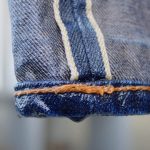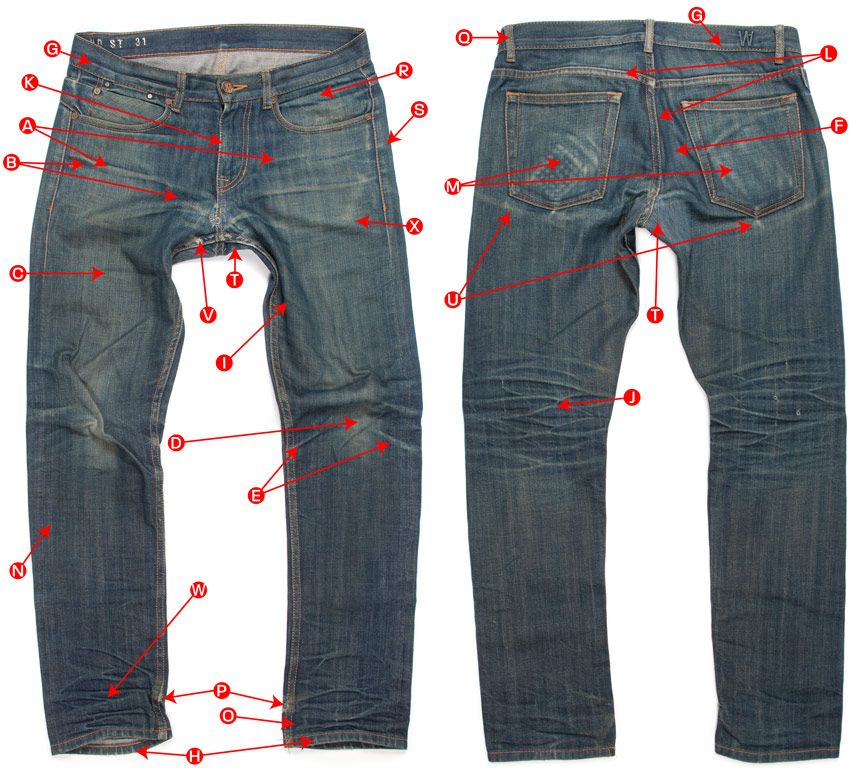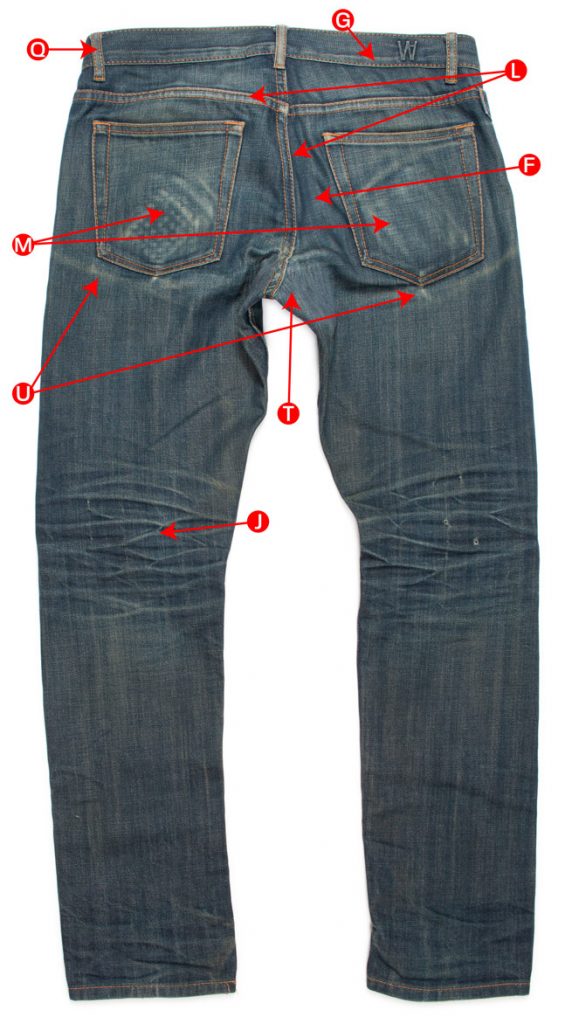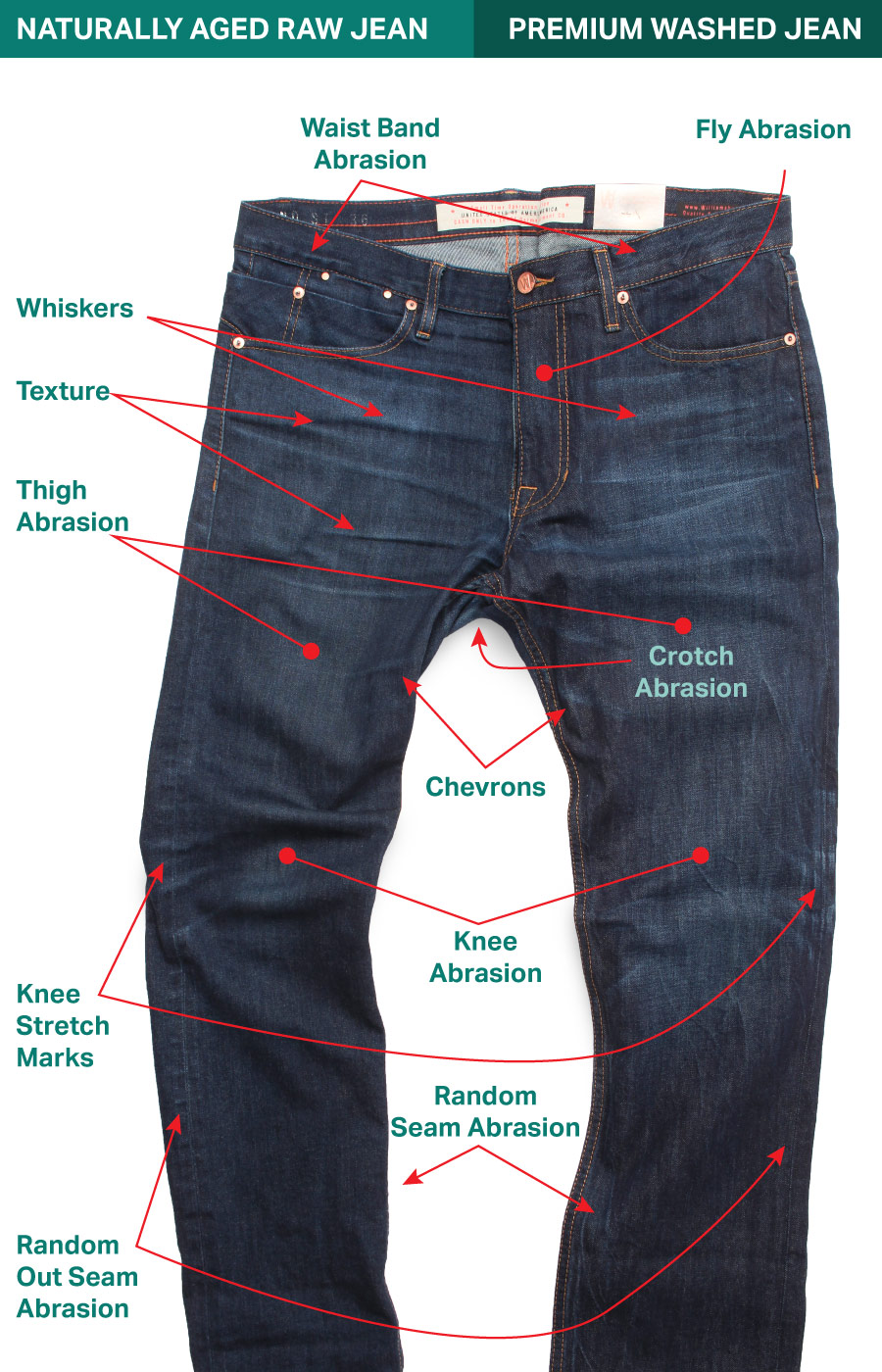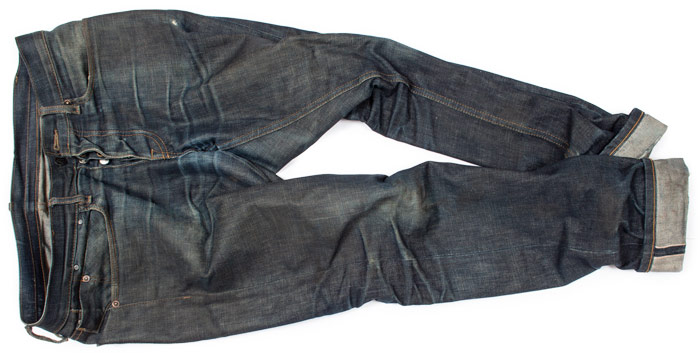
Often with denim and fading terminology, things are called what they look like. As is the fading effect known as “train tracks.” To achieve this type of fading, the jeans must have either a selvedge inside construction or two overlocked seams (busted seams) pressed open at the outseams.
During wear, friction can cause fading along the high points of the pressed open seams or selvedge. See the image below for an example of the train track fading at the outseam.





